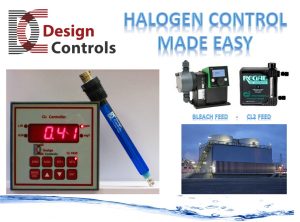These sensors are designed for the measurement of Free Chlorine, Chlorine dioxide and Dissolved Ozone in water.
The potentiostatic method is an “amperometric” measurement with constant potential, made through two metal electrodes and a reference electrode dipped in a cell.
The current running through the cell consumes Chlorine or Ozone contents, thus requiring constant renewal through a constant liquid flow.
In the traditional amperometric measurement it remains difficult to maintain a constant relation between cell current and Chlorine / Ozone concentration, especially near zero, because of the ORP and liquid resistance effects. As a result, frequent zero and sensitivity calibration are needed.
In the potentiostatic measuring, the electrodes’ potential is electronically controlled in relation to the liquid, providing a linear current/concentration relationship and a very stable zero value in oxidative absence. Maintenance is made simple through the design and shape of the sensor so it is easy to clean and replace.
We recommended to place the sensor our measurement cell in order to maintain constant sample flow.

